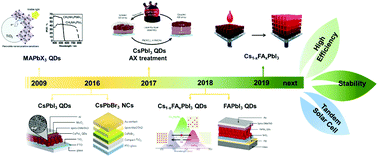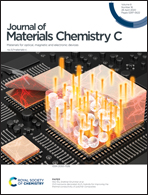Toward perovskite nanocrystalline solar cells: progress and potential
Abstract
With the flourishing development of perovskite nanocrystals (NCs), there has been a significant increase in the photoelectric conversion efficiency of perovskite nanocrystalline solar cells over the last five years. The variable band gap and superior phase stability of perovskite NCs are desirable for photovoltaic applications. A well-performing open-circuit voltage of these devices has been reported, approaching 85% of their theoretical limits. However, the short carrier lifetime and high interface recombination jointly limit the short-circuit currents and fill factors of the devices. This review aims at presenting a description of the fundamentals, recent progress and perspectives of perovskite nanocrystalline solar cells, with a focus on improving the stability of high-performance devices. Challenges and strategies concerning the surface passivation of perovskite NCs and films are discussed. In addition, we provide an extensive overview of the latest cutting-edge research to promote charge transport and extraction, focusing on the energy band alignment of the perovskite absorber, charge transport layer and the interface layer. Device architectures for improving the device performance are described, including tandem solar cells and gradient-bandgap multilayer solar cells. Finally, perspectives and undergoing efforts for the further development of perovskite nanocrystalline solar cells are presented.



 Please wait while we load your content...
Please wait while we load your content...